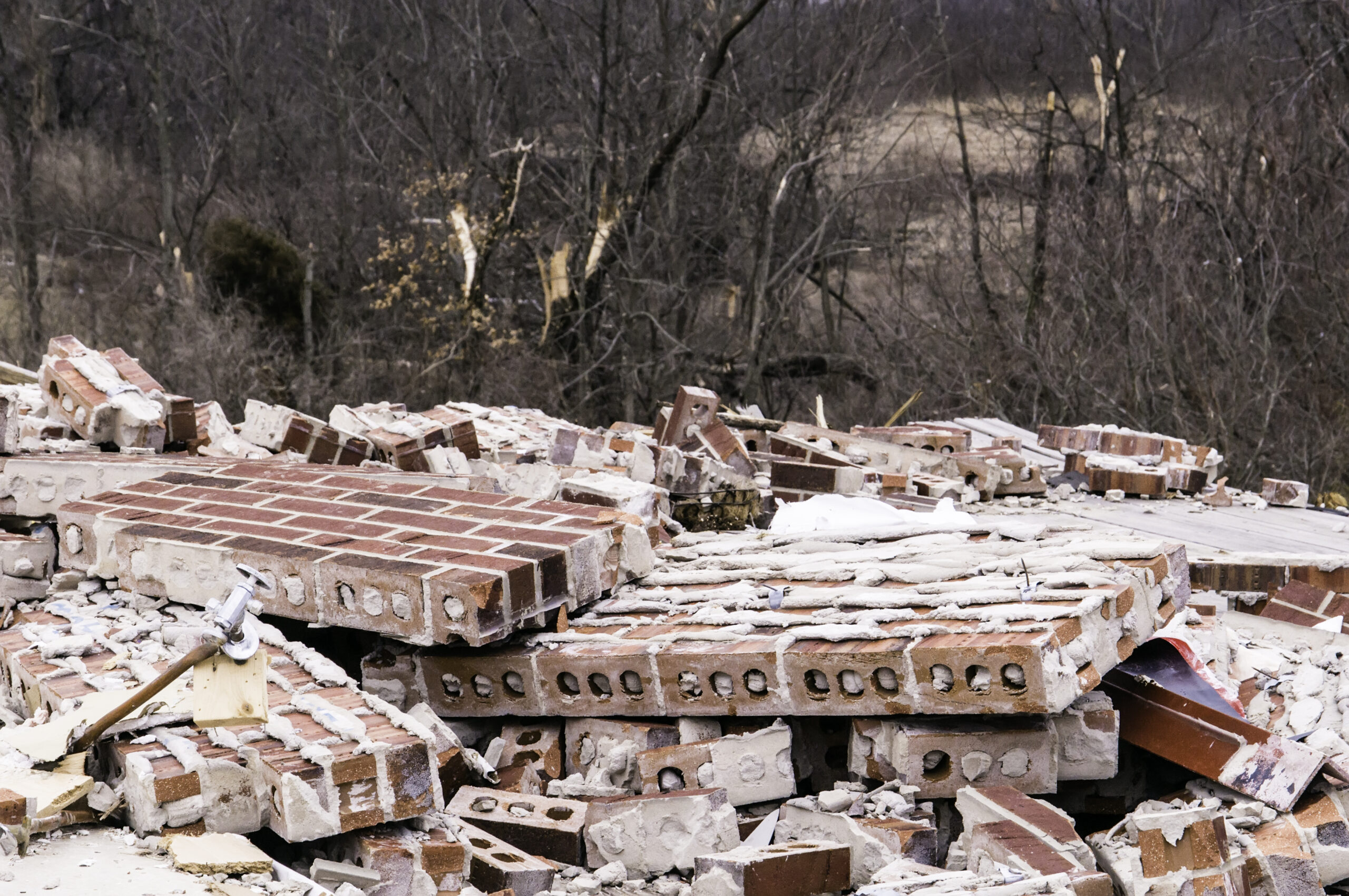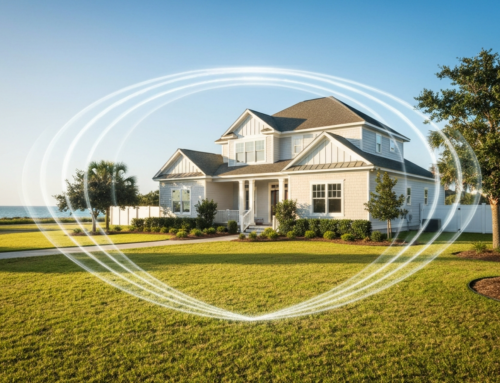The Rising Challenge of Securing Homeowners Insurance
For many Americans, their home is their most valuable asset, providing security and stability. Protecting that investment with homeowners insurance has always been a fundamental financial step. However, recent years have presented a growing challenge for homeowners across the United States: securing and maintaining affordable insurance coverage. This isn’t just about standard rate adjustments; a significant factor contributing to this difficulty is the increasing frequency and severity of climate-related events. As these events become more common and costly, the homeowners insurance landscape is shifting, impacting everything from premiums to policy availability. Understanding the connection between climate change and the availability of coverage, particularly homeowners insurance nonrenewal climate change impact, is becoming crucial for property owners nationwide.
The traditional model of homeowners insurance relies on assessing risk based on historical data. However, the changing climate is introducing new patterns and intensifying existing perils, making past data less reliable for predicting future losses. This uncertainty directly affects insurance companies’ willingness and ability to offer coverage, especially in areas deemed high-risk. The result is a market where finding comprehensive coverage can be difficult, costs are escalating rapidly, and policies are more frequently subject to nonrenewal, leaving homeowners vulnerable.
This situation is not confined to a few isolated incidents or regions. Reports and data from various sources, including government bodies and industry organizations, confirm that the trend of rising costs and declining availability is widespread, though certainly more acute in areas directly impacted by severe weather. Homeowners are feeling the pinch through higher premiums and sometimes face the stressful process of finding new coverage after a nonrenewal notice. This evolving challenge necessitates a deeper look into the underlying causes and potential solutions for those affected.
Key Findings on Premium Increases and Market Trends
Recent analyses provide a clear picture of the changes occurring within the U.S. homeowners insurance market. Data collected across millions of policies shows a significant acceleration in premium increases over the past few years. On average, homeowners insurance premiums have risen faster than the overall rate of inflation, placing an additional burden on household budgets. This trend is not uniform, with substantial variations depending on location and exposure to specific climate risks.
Consider the data points highlighting these trends:
- Average premiums per policy have increased notably, outpacing inflation by several percentage points over recent periods.
- There is a stark difference in premium costs between areas with high expected losses from climate-related perils and those with lower risk. Homeowners in the highest-risk ZIP codes often pay significantly more for their coverage, sometimes double or more, compared to those in the lowest-risk areas.
- Beyond just premiums, the data also indicates decreasing availability of coverage in high-risk zones. This is often reflected in higher policy nonrenewal rates in these vulnerable communities compared to less exposed areas.
These findings underscore a market reacting to increased risk. Insurers are adjusting their pricing and underwriting practices in response to the financial pressures imposed by climate events. While premium increases are a nationwide phenomenon, the magnitude of these increases and the associated challenges in finding coverage are disproportionately affecting regions most susceptible to events like hurricanes, wildfires, severe storms, and other weather-related disasters.
Understanding these market trends is the first step for homeowners in anticipating potential challenges with their own insurance policies. The regional disparities highlight the localized nature of climate risk and its immediate financial consequences for property owners in affected areas.
Climate Change and Its Direct Costs to Insurers
The primary driver behind the changing homeowners insurance market is the escalating financial impact of climate-related disasters on insurance companies. When severe weather events occur, insurers pay out claims to cover the damages to insured properties. As these events become more frequent and severe, the total cost of claims rises substantially.
Think about the types of events that generate large insurance claims (excluding flood damage, which is typically covered by separate flood insurance policies):
- Wildfires: Destroying homes and vast areas of property.
- Hurricanes and Tropical Storms: Causing wind damage, hail damage, and other destruction (though specific deductibles often apply for hurricane/wind damage, as discussed here).
- Severe Thunderstorms: Bringing high winds, large hail, and tornadoes.
- Winter Storms: Leading to freezing pipes (avoiding these claims is often key), ice dams, and structural damage from snow accumulation.
- Extreme Heat and Drought: While not directly causing property damage in the same way as storms, these can exacerbate wildfire risk and contribute to other environmental factors impacting property.
The cumulative cost of these events is staggering. Data shows that billion-dollar disasters have increased significantly in recent years, leading to hundreds of billions of dollars in total costs, a large portion of which falls on insurers through claims payments. This elevated level of payouts directly impacts insurers’ financial health.
A key metric insurers look at is the paid loss ratio, which compares the amount paid out in claims to the amount collected in premiums. When climate-related losses increase, the loss ratio goes up. In areas with high expected losses from climate perils, insurers experience higher loss ratios due to both a greater frequency of claims and a higher severity (average cost) per claim. For example, the average severity of claims in high-risk areas can be thousands of dollars higher than in low-risk areas.
When insurers face consistently high or unpredictable losses, they must take action to remain solvent and manage their risk exposure. This often involves increasing premiums, reducing the coverage offered, or exiting certain markets altogether. This is where the issue of homeowners insurance nonrenewal climate change impact becomes most pronounced.
Exploring Homeowners Insurance Nonrenewal Climate Change Impact
The tangible result of the financial pressures described above is the increasing rate of homeowners insurance nonrenewal climate change impact. Nonrenewal occurs when an insurance company decides not to offer a homeowner a new policy term when their current policy expires. This is distinct from a cancellation, which happens mid-policy term, usually due to non-payment or significant changes in risk.
In the context of climate change, nonrenewals are becoming a more common tool for insurers to manage their exposure in high-risk areas. If an insurer determines that the risk of insuring properties in a particular geographic area (sometimes down to the ZIP code level) has become too high due to the increased likelihood and severity of climate-related events, they may decide to stop offering new policies there and not renew existing ones.
Statistical data confirms this trend. Areas identified as having the highest expected losses from climate-related perils show significantly higher rates of policy nonrenewal compared to lower-risk areas. On average, nonrenewal rates in the highest-risk zones can be around 80 percent higher than in the lowest-risk zones. Furthermore, these nonrenewal rates have increased more rapidly in high-risk areas over time, indicating that the problem is worsening.
This strategic move by insurers is driven by several factors:
- Risk Management: Insurers need to balance the risk they take on. Concentrating too much exposure in areas prone to frequent and costly disasters can threaten their financial stability.
- Reinsurance Costs: Insurance companies themselves purchase insurance, known as reinsurance, to protect against large losses. The cost of reinsurance for properties in high-risk areas is rising dramatically, making it more expensive for primary insurers to operate there.
- Profitability: If the premiums collected in a high-risk area are not sufficient to cover the expected losses and operational costs, insurers may deem the business unprofitable and withdraw.
- Regulatory Environment: While state regulations govern insurance, the increasing climate risk presents challenges in setting rates that are both affordable for consumers and adequate for insurer solvency. This complex environment can sometimes lead insurers to limit exposure where rates are perceived as insufficient given the risk.
The rise in homeowners insurance nonrenewal climate change impact means that homeowners in vulnerable areas are not only facing higher premiums but also the potential loss of their current coverage, adding significant stress and financial uncertainty.
Where Homeowners Face the Greatest Risk and Higher Costs
While climate change impacts are global, their effects on homeowners insurance availability and cost are felt most acutely in specific geographic regions across the United States. These are typically areas prone to the most damaging types of weather events.
Regions facing the highest risk and experiencing the most significant challenges with homeowners insurance include:
- Coastal Areas: Prone to hurricanes, tropical storms, and rising sea levels. States along the Gulf Coast and the Atlantic seaboard often see high wind deductibles and increasing difficulty in obtaining coverage. While standard homeowners insurance doesn’t cover flood damage, the increasing frequency and intensity of coastal storms also highlight the critical need for separate flood insurance, an area where availability and understanding are also key issues, as discussed in topics like how to know if you need a good flood insurance policy.
- Wildfire-Prone Regions: Particularly in the Western United States. As wildfires become larger and more destructive, homeowners in or near forested areas face extremely high premiums or outright nonrenewal.
- Areas Prone to Severe Thunderstorms and Tornadoes: Parts of the Midwest and Southeast are increasingly experiencing powerful storms, leading to significant hail and wind damage claims.
- Regions with Extreme Temperatures and Drought: While less direct, these conditions contribute to wildfire risk and can impact building materials over time.
The impact is often granular, affecting specific neighborhoods or even individual properties within a broader region. Factors like the elevation of a home, proximity to vegetation, or specific local weather patterns can all influence the perceived risk and, consequently, the cost and availability of insurance.
Analyzing data at the ZIP code level reveals the hyper-localized nature of these challenges. Even within a state, areas just a few miles apart can have vastly different insurance market conditions based on their specific exposure to climate perils. This means homeowners need to be aware of their local risk factors, not just general regional trends.
Understanding the Consequences of Losing Coverage
Receiving a homeowners insurance nonrenewal notice can be a stressful and potentially costly experience. The immediate consequence is the loss of crucial financial protection for your home and assets. Without adequate coverage, homeowners are personally responsible for the full cost of repairing or rebuilding their home and replacing belongings damaged by covered perils like fire, wind (outside of specific deductibles or exclusions), or theft.
Beyond the direct financial risk from property damage, losing homeowners insurance can have several other significant consequences:
- Mortgage Requirements: Mortgage lenders almost always require homeowners to maintain a certain level of insurance coverage to protect their investment in the property. If coverage lapses, the lender may purchase expensive force-placed insurance on your behalf and add the cost to your monthly payment, often at rates far higher than standard policies. In extreme cases, continued lack of coverage could even violate mortgage terms.
- Difficulty Finding New Coverage: After a nonrenewal, finding a new policy can be challenging, especially if the nonrenewal was due to the property’s location in a high-risk area or a history of claims (even if climate-related). Some insurers may be hesitant to offer coverage, or the options available may come with significantly higher premiums and stricter terms.
- Limited Coverage Options: When standard insurance options dwindle, homeowners may be forced to seek coverage from state-run FAIR (Fair Access to Insurance Requirements) Plans or other residual market mechanisms. While these programs provide a safety net, they often offer more limited coverage than standard policies and can be more expensive.
- Impact on Property Value: In some markets, the difficulty or high cost of insuring a property can begin to affect its market value, making it harder to sell.
- Financial Strain: Higher premiums or the need to purchase coverage through less competitive markets can place a significant strain on a homeowner’s budget, adding to the overall cost of homeownership.
The ripple effects of homeowners insurance nonrenewal climate change impact extend beyond just the immediate need to find a new policy. It underscores the increasing financial vulnerability faced by homeowners in areas exposed to the intensifying impacts of climate change.
Steps for Homeowners Navigating Insurance Availability Issues
Facing rising premiums or the possibility of nonrenewal can feel overwhelming, but homeowners are not without options. Taking proactive steps can help navigate these challenges and secure the necessary protection for your property. The core strategy involves a combination of understanding your risk, improving your home’s resilience, and actively seeking the best available coverage.
Here are some steps homeowners can take:
- Understand Your Current Policy and Risk: Review your existing policy carefully to understand your coverage limits, deductibles (especially for specific perils like wind or hail, which may have separate windstorm deductibles), and any exclusions. Research the specific climate risks prevalent in your area. Knowing your vulnerabilities is the first step to addressing them.
- Implement Risk Mitigation Measures: Make improvements to your home to reduce its susceptibility to common climate-related damages. This could include:
- Fortifying your roof against wind or hail.
- Installing storm shutters or impact-resistant windows.
- Clearing vegetation and creating defensible space to reduce wildfire risk.
- Improving drainage around your property to mitigate water damage risk (though remember standard homeowners doesn’t cover floods, completing a flood risk assessment and considering flood insurance is vital).
- Regular home maintenance (vital maintenance tips can prevent costly damage and potential claims).
These measures can not only protect your home but may also make you eligible for insurance discounts or make your property more attractive to insurers.
- Shop Around and Compare Quotes: Don’t settle for the first quote you receive. Insurance rates and availability can vary significantly between companies, even for the same coverage. Work with an independent insurance agent who can compare policies from multiple insurers. This is especially important if you’ve received a nonrenewal notice.
- Inquire About Discounts: Ask insurers about available discounts. Many offer savings for safety and mitigation measures, bundling policies (bundling home and auto insurance can often lead to savings), or having a claim-free history.
- Explore State Programs or Residual Markets: If finding coverage in the standard private market is difficult or prohibitively expensive, research your state’s options, such as a FAIR Plan or other last-resort programs. While coverage may be more basic, it ensures you have some level of protection and meet mortgage requirements.
- Consider Higher Deductibles: Increasing your deductible can lower your premium, but be sure you can comfortably afford the out-of-pocket expense in the event of a claim.
- Stay Informed: Keep track of news and reports regarding the insurance market and climate risk in your area. Organizations like the National Association of Insurance Commissioners (NAIC) and state insurance departments often release valuable information and resources.
Navigating the complexities introduced by the homeowners insurance nonrenewal climate change impact requires diligence and persistence. By taking proactive steps to mitigate risk and explore all available options, homeowners can better protect their properties and financial futures in this changing environment.
While challenging, the current landscape also highlights the importance of the partnership between homeowners and their insurance providers or agents. Open communication about risk mitigation efforts and a thorough review of coverage needs (a coverage review is always recommended) can help ensure you have the best possible protection in place.
The increasing frequency and severity of climate events underscore the importance of treating insurance not just as a required expense but as a critical component of long-term financial planning and risk management. As the climate continues to evolve, so too must the strategies homeowners employ to protect their most valuable assets.
Ultimately, the goal is to find a balance: securing adequate coverage at the most reasonable price possible, while also taking practical steps to make your home more resilient to the impacts of a changing climate. This combination of smart insurance choices and proactive property management is key to navigating the current challenges in the homeowners insurance market.
The data pointing to significant homeowners insurance nonrenewal climate change impact serves as a wake-up call, urging homeowners to be prepared and informed. It’s a dynamic situation, and staying ahead of the curve by understanding the factors at play and the available options is essential.
Homeowners in high-risk areas may find that traditional insurance solutions are becoming less accessible. This is not just a financial inconvenience; it has real-world consequences for the security and stability of families. The push towards nonrenewal in vulnerable areas means that simply renewing an existing policy may no longer be a guaranteed option.
Exploring alternatives and understanding the nuances of available coverage becomes paramount. For instance, while standard policies may exclude flood, coastal residents or those near rivers need to understand their flood insurance options, including both federal and increasingly available private market policies.
Furthermore, the conversation needs to extend beyond just finding a policy to finding adequate coverage. A policy with insufficient limits or high deductibles may not provide true protection in the face of a major climate event. Homeowners must assess the actual cash value vs. replacement cost of their home and ensure their policy aligns with the cost of rebuilding in today’s market.
The data presented in reports, such as those detailing premium increases and nonrenewal rates, should serve as a call to action for homeowners. It highlights the potential for significant disruption and the need to plan ahead. Don’t wait until you receive a nonrenewal notice to start exploring your options.
Engaging with an insurance professional who understands the local market and the specific climate risks in your area is invaluable. They can help you navigate the complexities, identify potential coverage gaps, and find insurers who may still be writing policies in your region, albeit potentially at higher rates.
The increasing instances of homeowners insurance nonrenewal climate change impact also put a spotlight on the need for community-level resilience efforts. While individual actions are important, broader investments in infrastructure to mitigate the effects of climate change, such as improved drainage systems or building codes, can also play a role in making communities less risky and potentially more attractive to insurers in the long run.
However, such large-scale efforts take time. In the interim, individual homeowners must focus on what they can control: understanding their personal risk, mitigating those risks where possible, and diligently seeking the necessary insurance protection. This might involve exploring options from multiple insurers, considering higher deductibles to manage premium costs, or looking into state-specific programs designed for high-risk properties.
The challenge of securing homeowners insurance in the face of climate change is likely to persist and potentially intensify. Therefore, staying informed about market trends, understanding the factors driving costs and availability, and taking proactive steps to protect your home are no longer just good practices—they are essential for maintaining financial security as a homeowner in the modern era.
Ultimately, the ability to obtain and afford homeowners insurance is intrinsically linked to the evolving climate landscape. As the frequency and intensity of extreme weather events continue to shift, so too will the insurance market. Homeowners must adapt by becoming more educated consumers, more resilient property owners, and more persistent advocates for their own protection.
The trend of homeowners insurance nonrenewal climate change impact is a significant concern for homeowners across the country. It underscores the need for greater awareness, preparedness, and a proactive approach to managing the risks associated with property ownership in a changing climate. By focusing on risk mitigation, shopping around, and understanding all available options, homeowners can improve their chances of maintaining the crucial protection their homes require.
It’s not just about the immediate cost of premiums; it’s about the long-term security of your home and your financial well-being. Ignoring the impacts of climate change on the insurance market is no longer a viable option for homeowners in exposed areas.
For those living in regions prone to specific disasters, such as coastal areas facing hurricanes or regions susceptible to wildfires, the challenge is particularly acute. The data clearly shows that these areas bear a disproportionate share of the rising costs and availability issues.
Working with an insurance professional who specializes in high-risk areas can be extremely beneficial. They often have a deeper understanding of the limited markets, alternative coverage options, and specific requirements that insurers may have in those regions.
Moreover, simply paying a higher premium doesn’t always guarantee comprehensive coverage. Homeowners need to ensure their policy limits are adequate to rebuild their home based on current construction costs and that their personal property coverage is sufficient to replace belongings.
The phenomenon of homeowners insurance nonrenewal climate change impact is reshaping the relationship between homeowners and their insurers, forcing difficult conversations about risk tolerance, affordability, and the long-term sustainability of certain markets. It highlights the interconnectedness of environmental changes and financial systems.
For anyone whose policy is nearing renewal, it’s a good time to start the conversation with your agent or insurer. Ask about your current risk assessment, understand if any recent changes in climate data or modeling are impacting your policy, and inquire about potential premium increases or changes in coverage terms.
If you do receive a nonrenewal notice, act quickly. Contact your current insurer to understand the specific reason for nonrenewal. Then, immediately begin the process of shopping for new coverage. This is where working with an independent agent can be particularly helpful, as they have access to multiple insurance companies and can help you explore all possibilities, including state-specific options.
The path forward involves adaptation – both for the insurance industry and for homeowners. The industry must evolve its risk assessment and pricing models to accurately reflect current and future climate risks. Homeowners, in turn, must adapt by investing in home resilience and being prepared to navigate a more complex and potentially more expensive insurance market.
Data shared by entities like the U.S. Department of the Treasury and organizations like the National Association of Insurance Commissioners (NAIC) provides valuable insights into these market dynamics. This transparency is crucial for homeowners to understand the broader trends affecting their individual policies.
While the challenges are real, being informed and proactive offers the best chance for homeowners to secure the necessary protection for their homes. Understanding homeowners insurance nonrenewal climate change impact is no longer just an academic exercise; it’s a practical necessity for millions of property owners in the United States.
The ongoing dialogue between regulators, insurers, and the public about how to address the increasing costs and availability issues is vital. Policy solutions and market innovations will be needed to ensure that homeowners in vulnerable areas can continue to access essential insurance coverage.
In the meantime, individual preparedness remains key. Taking steps to mitigate risks, understanding your policy, and exploring all available options are the most effective strategies for homeowners navigating this challenging environment. Don’t underestimate the value of simple maintenance and home hardening measures; they can pay dividends in both reduced risk and potential insurance savings.
The conversation around homeowners insurance nonrenewal climate change impact is complex, involving scientific data, economic analysis, regulatory considerations, and personal financial planning. For homeowners, focusing on the actionable steps they can take provides a sense of control in a situation that can otherwise feel overwhelming.
Remember, insurance is designed to protect against financial loss from unexpected events. As the unexpected becomes more frequent and intense due to climate change, the system is under strain. Understanding this strain and its implications for your policy is the first step toward effective management.
The importance of being adequately insured cannot be overstated. Your home represents not just a financial asset, but a place of security and community. Protecting it with the right insurance coverage, even in the face of rising costs and potential nonrenewal due to climate impact, is essential for peace of mind.
Navigating homeowners insurance nonrenewal climate change impact requires vigilance and informed decision-making. By staying educated about the risks, proactively strengthening your home, and working closely with insurance professionals, you can position yourself to better handle the challenges in today’s evolving market.
It’s a changing landscape, but with the right approach, homeowners can continue to find ways to protect their properties against the growing threats posed by a changing climate.
The data highlights that policy nonrenewal rates are significantly higher in areas facing the greatest climate-related risks. This means that even if you haven’t experienced a major claim, living in a vulnerable location could still lead to your insurer deciding not to renew your policy. This reinforces the idea that risk is assessed not just on individual claim history, but also on the broader environmental factors impacting a geographic area.
This trend is prompting some homeowners to consider the long-term viability of remaining in high-risk areas, a difficult decision with significant personal and financial implications. For those committed to staying, adapting their homes and finding innovative insurance solutions becomes paramount.
Exploring the possibility of state-specific programs or alternative insurance markets designed for properties in coastal or wildfire-prone areas is essential. These programs, while sometimes more expensive or limited, exist precisely because the standard market is retreating from these high-risk zones.
Furthermore, staying on top of home maintenance is crucial. Insurers look favorably on properties that are well-maintained and show evidence of risk mitigation efforts. Simple things like keeping gutters clean, trimming trees, and regularly inspecting your roof can reduce the likelihood of smaller claims and potentially influence an insurer’s decision at renewal time.
The data on the increasing frequency and severity of climate events is compelling. It demonstrates that this is not a cyclical market fluctuation but a potentially long-term trend driven by fundamental environmental changes. Therefore, homeowners need to adopt a long-term perspective when planning for their insurance needs.
In conclusion, the homeowners insurance nonrenewal climate change impact is a significant and growing concern for homeowners in the United States. Rising premiums, decreased availability, and higher nonrenewal rates are all consequences of the increasing financial burden of climate-related disasters on the insurance industry. By understanding these challenges, implementing risk mitigation measures, and proactively exploring all available insurance options, homeowners can improve their ability to protect their homes and navigate this evolving market.
Have questions? Contact us here.






